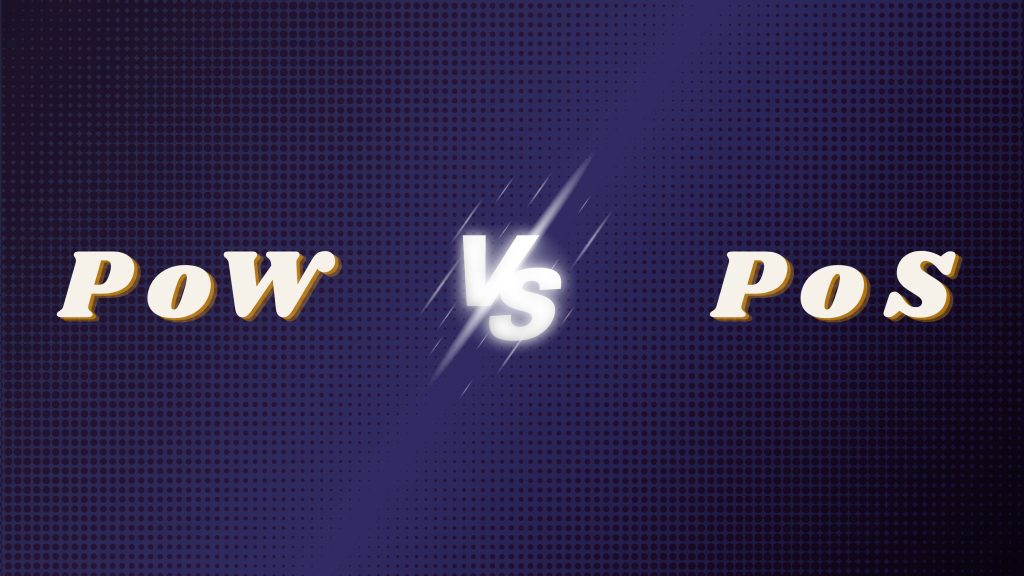The ever-growing cryptocurrency landscape is primarily fueled by two consensus mechanisms: Proof-of-Work (PoW) and Proof-of-Stake (PoS). These mechanisms serve as the foundation for decentralized networks, ensuring the security, reliability, and functionality of various blockchain platforms. As the crypto space continues to evolve, understanding the strengths and weaknesses of each mechanism becomes increasingly important. In this article, we will delve deeper into the intricacies of PoW and PoS, examining their pros and cons, and discussing the different use cases and scenarios for which each consensus mechanism might be better suited.
Proof-of-Work Basics


Proof-of-Work is the original consensus mechanism that was first introduced by Bitcoin. It relies on a competitive process called mining, in which miners use their computational power to solve complex mathematical puzzles. The first miner to solve the puzzle gets the privilege of adding a new block to the blockchain, and in return, they receive a block reward, usually in the form of newly minted cryptocurrency. This mechanism ensures the integrity and security of the network by making it difficult for any individual or group to tamper with the blockchain unless they control more than 51% of the network’s hashing power.
The process of mining requires specialized hardware, such as ASICs (Application-Specific Integrated Circuits) or powerful GPUs (Graphics Processing Units). This creates a barrier to entry, as miners need to invest in expensive equipment and cover the ongoing costs of electricity to participate in the network. As a result, PoW mining has become an increasingly competitive and resource-intensive endeavor.
Pros of Proof-of-Work
Proof-of-Work (PoW) has long been the preferred consensus mechanism for many cryptocurrencies. While it has its drawbacks, there are several benefits that make it a powerful choice for securing a blockchain network.
- High security: The PoW consensus mechanism is highly secure, as it requires significant computational power to tamper with the blockchain. The more miners participate in the network, the more secure and resilient it becomes. This high level of security has made PoW-based networks, like Bitcoin, a trusted store of value.
- Decentralization: PoW often provides a higher degree of decentralization than PoS systems. Although mining has become more centralized over time, the underlying principle of PoW is that anyone with enough hardware resources can participate in the network. This creates a diverse ecosystem of miners, which helps to prevent any single entity from controlling the network.
- Transparency: PoW networks are transparent, allowing anyone to see which transactions are being added to the blockchain. This transparency creates trust in the network, as users can verify that their transactions are being processed and included in the blockchain.
- Trustworthiness: In PoW networks, miners compete against each other for block rewards, creating a system of checks and balances. This competition ensures that no single miner can gain too much power over the network, fostering a sense of trust in the system.
Cons of Proof-of-Work
Proof-of-Work, while providing significant benefits in terms of security and decentralization, also has its fair share of drawbacks that have led to debates and concerns among the crypto community.
- Energy-intensive and carbon footprint
- Limited transaction throughput
- Centralization and mining monopolies
Energy-intensive and carbon footprint: The PoW mining process is known for its high energy consumption, which has raised concerns about its environmental impact. The substantial amount of electricity required for mining has contributed to a significant carbon footprint, leading many to question the sustainability of PoW-based networks in the long run.
Limited transaction throughput: PoW networks, such as Bitcoin, have limited transaction throughput, which can lead to slower transaction processing times and higher fees during periods of high network congestion. This limitation has driven the development of alternative solutions, such as the Lightning Network, to improve transaction efficiency.
Centralization and mining monopolies: Over time, PoW mining has become increasingly centralized, as large mining farms with access to cheap electricity and specialized hardware have gained a competitive advantage. This centralization can undermine the decentralization that PoW aims to achieve and potentially expose the network to manipulation by a few powerful players.
Proof-of-Stake Basics


Proof-of-Stake is an alternative consensus mechanism that has gained popularity as a more energy-efficient and accessible option compared to PoW. Instead of relying on computational power to secure the network, PoS uses the ownership of cryptocurrency as the basis for selecting validators, who are responsible for validating transactions and maintaining the blockchain.
In a PoS system, validators are chosen based on the amount of cryptocurrency they hold and are willing to “stake” as collateral. By staking their coins, validators signal their commitment to the network and their intention to act honestly. Validators are then randomly selected to create new blocks and validate transactions. They receive rewards in the form of transaction fees or newly minted coins for their participation in the network.
This mechanism eliminates the need for energy-intensive mining, making PoS networks more environmentally friendly and cost-effective. Additionally, PoS systems tend to be more accessible, as anyone with a sufficient amount of cryptocurrency can participate as a validator, without the need for expensive mining hardware.
Pros of Proof-of-Stake
Proof-of-Stake offers several advantages over PoW, making it an appealing choice for many projects in the crypto space.
- Less energy-intensive and cost-effective
- Accessibility and delegation
- Security and decentralization
- Flexibility in governance
Less energy-intensive and cost-effective: One of the main advantages of PoS is its lower energy consumption compared to PoW. PoS networks are considered more eco-friendly, as they don’t require the vast amounts of electricity needed for mining. This also makes PoS more cost-effective, as validators can participate in the network with lower operational costs.
Accessibility and delegation: PoS networks are often more accessible than PoW networks, as they don’t require expensive mining equipment to participate. Instead, validators need only hold a certain amount of cryptocurrency to become eligible. Many PoS systems also support delegation, allowing users with smaller stakes to participate by pooling their resources with other users.
Security and decentralization: PoS networks can achieve a high level of security and decentralization, as validators have a financial stake in the network’s success. Validators are incentivized to act honestly, as they risk losing their staked coins if they engage in malicious behavior.
Flexibility in governance: PoS networks can offer greater flexibility in governance and decision-making. Validators can be given the power to vote on proposals or changes to the network, allowing for more community-driven decision-making and fostering a more inclusive and democratic environment.
Cons of Proof-of-Stake
Despite its numerous advantages, Proof-of-Stake is not without its own set of challenges and potential issues that may arise in certain situations.
- Vulnerability to 51% attacks
- Potential for centralization and validator cartels
Vulnerability to 51% attacks: While both PoW and PoS networks can be vulnerable to 51% attacks, PoS networks may be more susceptible in certain cases. In a PoS network, an attacker would need to acquire a majority of the staked coins to gain control, which can be especially concerning for small-cap PoS networks with lower market capitalization.
Potential for centralization and validator cartels: Just as with PoW, centralization can also be a concern for PoS networks. Wealthy individuals or groups with significant holdings can dominate the validator selection process, leading to the formation of validator cartels. These cartels can potentially manipulate the network and undermine its decentralization.
Proof-of-Work vs Proof-of-Stake: The Biggest Differences
When it comes to choosing between Proof-of-Work and Proof-of-Stake, understanding the key differences is vital for making an informed decision. Both consensus mechanisms have their own strengths and weaknesses, and your choice will ultimately depend on your specific needs and goals.
| Criteria | Proof-of-Work | Proof-of-Stake |
|---|---|---|
| Energy Consumption | High | Low |
| Decentralization | Greater, with proper hardware | Can vary, depending on the setup |
| Security | Highly secure | Secure, but may be vulnerable to 51% attacks |
| Transaction Throughput | Limited (e.g., 5-7 TPS for Bitcoin) | Higher (e.g., 100k TPS for NEAR) |
| Finality Time | Slower (e.g., 10 minutes for Bitcoin) | Faster (e.g., 2 seconds for NEAR) |
| Vulnerability to 51% Attacks | Lower | Higher, especially for small-cap networks |
We can see that Proof-of-Work is known for its high security and greater decentralization but requires more energy and has limited transaction throughput. On the other hand, Proof-of-Stake is more energy-efficient and can offer faster transaction speeds, but it may be more vulnerable to 51% attacks. Understanding these key differences will help you choose the consensus mechanism that best suits your specific needs and objectives.
The Bottom Line
Both Proof-of-Work and Proof-of-Stake consensus mechanisms have their own unique strengths and weaknesses. PoW provides high security and decentralization but is energy-intensive and may face issues with centralization due to mining monopolies. PoS, on the other hand, is more energy-efficient and accessible but can be more vulnerable to 51% attacks and centralization through validator cartels.
Ultimately, the choice between PoW and PoS depends on the specific requirements and goals of a project or individual. Some may prefer the security and proven track record of PoW, while others might prioritize the energy efficiency and accessibility of PoS. As the cryptocurrency space continues to evolve, we can expect ongoing innovation and development in consensus mechanisms, potentially giving rise to new, more efficient, and secure solutions.









